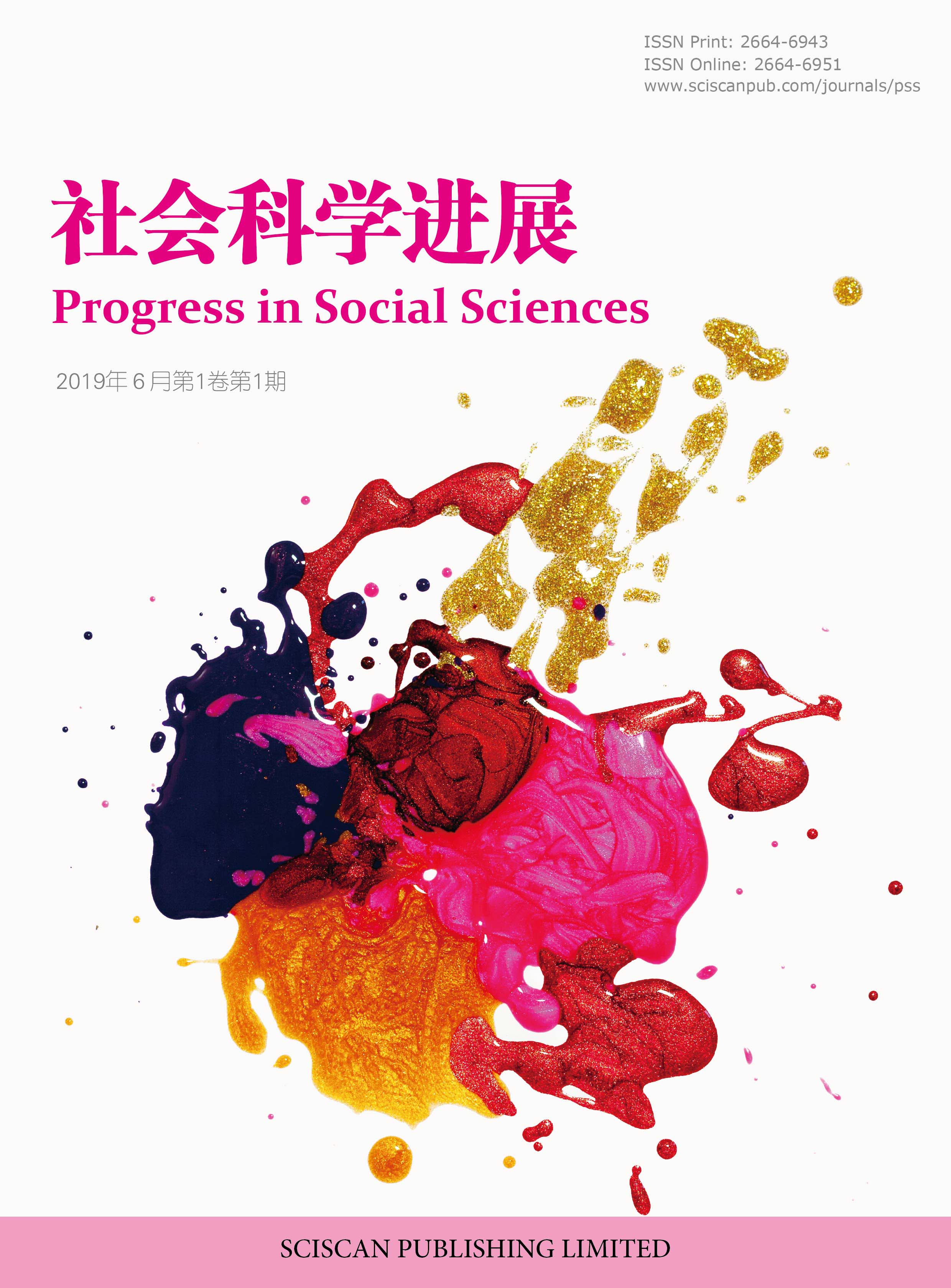Progress in Social Sciences
老幼共托模式的效能及其边界——基于价值、主体与行为的整合性分析
The Effectiveness and Boundaries of the Intergenerational Shared Care Model —An Integrative Analysis of Values, Actors, and Behaviors
- Authors: 张一文 朱洋溢 张瑜
-
Information:
南京工业大学,南京
-
Keywords:
Intergenerational shared care; Intergenerational integration; Public value; Cooperative production; Behavioral public administration老幼共托; 代际融合; 公共价值; 合作生产; 行为公共管理
- Abstract: In the context of the dual challenges of global aging and declining birth rates worldwide, the intergenerational shared care model has emerged as an innovative approach to integrate elderly care and childcare services. This model has been incorporated into China’s “14th Five-Year Plan” for integrated elder and childcare services. Taking the J Province L City H District’s “Elder-Child Care Integrated Center,” a provincially recognized exemplary case, as the research subject, this study employs survey questionnaires and interviews to collect primary data. An innovative “Value-Actor-Behavior” integrative analysis framework is constructed to systematically analyze the three-fold boundaries faced by the model’s practical implementation. The value boundary reveals a significant misalignment between high-level assumptions of “intergenerational integration” and residents’ fundamental preferences rooted in “social-emotional choices.” The actor boundary exposes goal drift within the cooperative production network involving “community-enterprise” “parents’ reluctance due to trust deficits”, passive acceptance by elderly groups, and service role conflicts leading to collaboration failures. The behavioral boundary stems from tensions between elderly individuals’ “path dependency” and parents’ “loss aversion” behaviors, and the design of precise governance mechanisms. This study moves beyond mere problem diagnosis, extracting the intrinsic properties of governance tools to delineate the conditions and limitations of the elderly-child shared care model. Based on this, a targeted governance pathway involving value redefinition, active subject participation, and behavioral activation is proposed. This aims to optimize the “elderly-children” service system and promote the transition of public services from mere “physical implementation” to genuine “hearts,” providing a theoretical foundation and actionable policy insights. 在全球老龄化与少子化双重挑战下,老幼共托模式作为整合养老与托育服务的创新方案,被纳入我国“十四五”养老托育一体化政策框架。本文以J省L市H区老幼共托综合体这一“省级优秀案例”陷入“运营冷清”困境的典型项目为研究对象,综合问卷调查法和访谈法,获取一手数据。研究创新性地构建了“价值—主体—行为”整合性分析框架,系统剖析了该模式在实践中遭遇的三重效用边界。价值边界体现为“代际共融”的高阶预设与居民基础性偏好及“社会情感选择”下行为逻辑的深刻错位;主体边界揭示于合作生产网络中“社区—企业”目标漂移、幼儿家长“信任保留”、老年群体“被动接受”及服务者角色冲突所引发的协同失效;行为边界则根植于老年群体“路径依赖”与家长“损失厌恶”等微观行为机制同精密治理设计之间的张力。本研究超越简单的问题诊断,从“治理工具内在属性”的视角提炼出老幼共托模式的适用条件与局限性。据此,文章提出一套包含价值重塑、主体参与、行为激活在内的精准治理路径,为优化“一老一小”服务体系、推动公共服务从“物理落地”迈向“人心落成”提供深化的理论依据与可操作的政策启示。
- DOI: https://doi.org/10.35534/pss.0711157
- Cite: 张一文,朱洋溢,张瑜.老幼共托模式的效能及其边界——基于价值、主体与行为的整合性分析[J].社会科学进展,2025,7(11):926-931.
1 引言
在全球老龄化与少子化趋势加剧的背景下,“一老一小”照护问题已成为横亘在我国社会发展面前的现实难题,对传统家庭照料模式和社会保障体系构成了前所未有的压力。社区作为公共服务供给的重要场域,其角色日益凸显,“统筹推进城乡养老托育服务的发展,成为今后我国积极应对老龄化问题的一项重要措施”[1]。在此时代呼唤下,集养老与托育于一体的“老幼共托”模式,基于代际融合理念,旨在通过资源共享与代际互动,实现“1+1>2”的协同效应,因而从顶层设计的蓝图走向地方实践的土壤,成为“十四五”时期政策鼓励的创新社会服务模式。从成都、杭州的“老幼复合型社区综合体”到上海“15分钟社区生活圈”的嵌入,各地探索方兴未艾。
然而,政策理想与复杂的地方实践之间往往存在着错位。J省L市H区K社区的老幼共托综合体项目,作为一个集政策前瞻、模式创新、资源集约于一体的“完美方案”,曾成功入选“J省养老服务十佳优秀案例”。但颇具讽刺意味的是,这个被媒体聚光灯环绕、被政策寄予厚望的项目,却在日常运营中陷入了“门庭冷落”的困境,居民参与率持续低迷,服务价值未能实现。这一强烈的“理想—现实”反差,迫使我们超越对单一项目成败的简单归因,转而进行一次深刻的追问:“老幼共托”这一治理工具本身,其内在的“锋利”之处与固有的“脆弱”之点究竟是什么?其发挥效能的边界条件又在哪里?
本研究旨在通过对H区这一典型个案的深度剖析,系统探析老幼共托模式在特定社会情境下的效用与限度。研究将构建一个整合性的“价值—主体—行为”分析框架,不仅诊断项目“哪里做错了”,更致力于勘探该模式“为何在此地失效”以及“在何种条件下可能成功”。研究成果旨在为同类地区规避推广风险、实现精准施策提供理论借鉴与实证依据,推动养老托育服务创新从“照本宣科”向“优先确认适配性”的智慧治理转型。
2 文献综述与研究框架
2.1 文献综述
当前国内对老幼共托模式的研究已初步形成体系,主要围绕模式分类、实践探索与现存问题展开。在理论构建方面,朱勤提出的“场域分类模型”区分了机构场域与社区场域两种模式,系统分析了从资源共享到代际互惠的演进逻辑,并指出了政策、资金、人才等现实挑战。[2]候蔺则构建了“双龄共养资源整合模型”,聚焦于政策、空间与人力资源的协同机制,同时揭示了服务标准不统一、跨部门协调困难等瓶颈。[3]周建芳等人提出的协同发展理论与“在地化”弹性服务理念,则从系统整合角度强调了资源优化配置的重要性。[4]实践层面,西藏三有村幸福驿站、湖北麻城衍福里公益社等案例,从不同侧面验证了模式的可行性与其对特定资源的路径依赖。
然而,既有研究存在明显的空白。首先,多数研究聚焦于模式的机制构建与成功经验的总结,对其内在的局限性及在资源约束型普通社区的“水土不服”现象关注不足,缺乏对模式“失效”机理的深入解构。其次,现有分析多停留在宏观制度或中观组织层面,对微观个体——尤其是老年人与幼儿家长——的行为动机、认知偏好与决策机制缺乏足够的洞察,难以解释为何精心设计的服务无法转化为居民的持续参与行为。这些研究空白,恰恰为本研究的深入提供了契机与空间。
2.2 分析框架:“价值—主体—行为”的三维整合
为系统回应上述研究空白,并解构H区实践案例,本研究构建了一个整合性的“价值—主体—行为”分析框架。该框架融合了公共管理学的经典理论与前沿视角,旨在对老幼共托模式进行多层次、立体化的透视。
(1)价值维度:基于公共价值理论
公共价值理论(Moore,1995)指出,公共管理的终极目标在于创造“公民集体定义的福祉”,其成功的“战略三角”模型要求价值主张、合法性支持与操作能力三者协同。[5]本维度借此审视老幼共托模式旨在创造的公共价值本质,并探究其预设的“理想效能”与目标群体“真实定义的福祉”之间的契合度与内在张力。
(2)主体维度:基于合作生产理论
合作生产理论挑战了“政府提供—公民消费”的传统线性模型,强调公民与多方主体共同生产服务的核心地位[6]。对于高度依赖互动的老幼共托模式而言,合作生产是实现其价值的理想路径。本维度用于分析多元主体在价值共创网络中的角色定位、互动关系、利益博弈与协同障碍,揭示合作路径断裂的深层原因。
(3)行为维度:基于行为公共管理视角
行为公共管理将关注点投向政策过程中的微观个体,通过分析其认知偏差、动机结构与社会情感等心理机制,来解释宏观政策的实际效果。本维度为上述“合作生产为何难以启动”提供关键的微观基础,深入洞察老年人、家长等关键群体的行为规律,揭示精密的制度设计如何与生动而顽固的“行为现实”产生碰撞。
框架的内在逻辑是:公共价值的实现,有赖于合作生产路径的畅通;而合作生产的启动与维系,最终取决于其对微观主体行为规律的洞察、尊重与引导。该案例的失败,正是这三个维度上内在矛盾与张力的集中体现。本文将依此框架,逐层展开对案例的剖析。
3 研究设计与方法
本研究采用单一案例深度剖析法,选取J省L市H区老幼共托综合体为研究对象。该案例的典型性在于,首先,它地处三线城市的老旧社区,其“哑铃型”人口结构——60岁以上占32%,0~18岁占23%——与资源匮乏的现状,是全国众多普通社区而非一线城市示范区的真实缩影,研究结论更具普适参考价值;其次,项目本身经历了从精巧设计到落实困难的完整过程,现象鲜明,矛盾突出,为探究内在机理提供了丰富的基础。
研究对H区下辖多个社区的240位居民进行问卷调查,有效回收率为86%。问卷旨在了解居民对老幼共托的认知、接受度、顾虑及服务偏好。其次,采用半结构化访谈法,对1名社区工作者、20名老年人、10名老人子女及5名幼儿家长,共计36名关键利益相关者进行访谈,获取其对项目设计、运营及参与体验的质性资料。数据分析采用定性分析与定量描述相结合的方法,交叉验证研究结论。
4 案例分析:老幼共托模式的三重边界
4.1 价值边界:高阶价值预设与现实需求的错位
公共价值理论强调,价值的创造必须始于对公民集体定义的福祉的精准锚定。[5]该案例实践的困境,首先源于其雄心勃勃的“代际共融”高阶价值预设,与K社区居民——尤其是老年群体基础性、习惯性的生活偏好与行为逻辑发生了深刻错位。
(1)高阶目标与基础偏好的冲突
项目运营方钟声教育集团,基于其幼教领域的成功经验,自然地将“课程化”思维移植到养老服务中,提供了书法、舞蹈、月嫂技能培训等一系列标准化、结构化的服务产品。然而,这种供给逻辑与在地需求严重脱节。社区超半数老人因服务供需不匹配而拒绝参与。K社区的老年人以低学历、低收入群体为主,其日常社交需求高度聚焦于广场舞、下棋、聊天等低成本、低门槛、高频率的基础性活动。一位老人表示,“舞蹈课太难跟不上,还是喜欢在小区跳广场舞”,月嫂培训等“银龄焕发”课程,对于并无再就业需求与动机的本地老人而言,更是遥不可及的“空中楼阁”。这背后是项目设计者一个关键的行为误判,他们将“提供服务”的供给行为,等同于“创造价值”的结果,而未深刻理解价值必须由用户从其使用体验与行为中获得感知。
(2)“社会情感选择”下的行为逻辑
社会情感选择理论(Carstensen,1992)为理解老年群体的行为提供了有力的微观解释。该理论指出,随着个体感知到未来时间的有限,其目标会从知识获取转向情感满足,更倾向于追求情感上有意义的关系和体验。[7]这精准地解释了为何社区周大爷在体验过一两节书法课的新鲜感后,很快回归了与老友下棋的娱乐方式。对于“周大爷们”而言,在有限的时间里,与熟悉的老友在固定的场所进行下棋这类情感确定性强、认知负荷低的社交活动,其情感回报远高于在陌生环境中学习新技能、结识新朋友所带来的不确定收益。项目试图引导老年人从“被照料者”转向代际互动中的“价值共创者”,但这一定位与大多数老年人受“社会情感选择”影响而形成的“情感优先”与“路径依赖”行为模式存在天然张力。
因此,老幼共托模式的第一个边界就此显现,它更适用于那些自身有较高文化资本、有强烈“再学习、再发展”内在动机的老年群体,以及对代际互动有天然认同感的社区文化中。在像K社区这样以基础社交与情感陪伴需求为主的普通老旧社区,该模式的“高阶价值”因缺乏行为基础而必然“悬浮”。
4.2 主体边界:合作生产网络中的角色困境与协同失效
合作生产理论指明,老幼共托模式的核心效能必须通过多元主体的深度参与和共同创造来实现。然而,该案例揭示了一个脆弱的合作生产网络,其中各方主体因角色困境与目标分歧而陷入协同失效。
(1)“社区—企业”二元主体的目标漂移与角色冲突
项目采用了创新的“社企联建”模式,社区负责方向把控与资源统筹,专业的钟声教育集团作为运营主体。然而,这种二元结构在实践中出现了价值目标的漂移。社区追求的“公共价值”是满足居民异质化、非盈利的需求,而企业出于生存逻辑,必然追求标准化、可复制、有盈利点的服务产品。当作为主导方的社区缺乏足够强大的契约管理与价值引导能力时,企业的“运营效率”逻辑便自然占据了主导,导致服务供给偏离了“公共价值”的航道,形成了“我们为他们服务”的供给导向模式,而非“我们与他们一起服务”的价值共创模式。
(2)关键用户群体的“被动接受”与“信任保留”
作为核心服务对象的老年群体,在服务设计中处于最被动的地位。他们虽然是项目起源——一场“敲门行动”中需求的提出者,却在方案成型后变成了被动的接受者,其“生活语言”无法有效转化为调整服务内容的“管理语言”。他们未被真正赋予共同设计和反馈意见的权力与渠道。
幼儿家长则表现出普遍的“信任保留”。问卷调查结果显示,44.71%的家长担心疾病传播风险,超半数家长担忧代际价值冲突与交际障碍,42.31%的家长认为机构尚不成熟。从行为视角看,这是“可得性启发”与“损失厌恶”共同作用的结果,任何关于老人与孩子互动的负面想象——如健康风险、观念冲突——都极易被激活,其心理权重远超过“代际共融”这一抽象、延迟的好处。访谈中一位家长的担忧——“老幼共托可能不利于幼儿独立性的培养”——进一步体现了家长基于自身教育理念的认知偏差与风险规避。而事实上,张璐、吕元等学者指出,老年人与儿童的身心发展需求和活动特征表现出显著的共通性。[8,9]
(3)服务提供者的角色转换焦虑
调研发现,部分年轻幼师对转而服务老人存在抵触情绪,认为二者在专业知识与技能上存在较大差异。这反映了服务提供者层面的角色冲突,进一步削弱了前台服务的质量与情感投入。
综上所述,H区案例在主体层面呈现出合作生产网络的系统性失灵。社区与企业、运营者与使用者,以及不同使用者群体之间,未能建立起基于信任与共同目标的协同关系。因此,老幼共托模式的第二个边界在于,其成功高度依赖于一个具有高社会资本、强邻里关系与紧密社区认同的“熟人社会”基础,或者由一个具有极高公信力与协调能力的主体——如权威公立机构——来主导运营。在信任基础薄弱、原子化程度高的普通社区,该模式的合法性构建与主体协同成本将极其高昂。
4.3 行为边界:模式设计与行为逻辑的偏差
行为公共管理视角将分析聚焦于微观层面,揭示出项目的治理精密设计与个体固有的行为惯性之间存在着难以调和的张力。
(1)老年群体的“情感优先”与“路径依赖”
老年人的低参与率,是其特定生命阶段行为规律的理性体现。如前所述,社会情感选择理论驱动他们追求情感收益最大化。此外,行为转换成本过高是关键障碍。他们已有稳定的生活轨迹和固定的社交圈。打破这一惯例,去适应新环境、学习新规则、结识新朋友,需要投入大量的认知、心理与体力资源,其预期收益却模糊不清。因此,维持原有“路径”成为最自然、最经济的选择。李宇峰(2018)的研究也佐证,老年人因生理衰退与社会角色转变,主动交际意愿本身呈下降趋势。[10]项目的课程化设计,无形中为参与设置了过高的“行为门槛”。
(2)幼儿家长的“风险优先”与“现状偏好”
家长群体的行为逻辑则由强烈的损失厌恶主导。他们对孩子可能遭受的健康、发展受阻等潜在损失的恐惧,远超于对代际共融可能带来好处的期待。在信息不充分、不确定性高的情境下,行为经济学中的“现状偏好”会发生作用,使得不参与、保持现状成为默认的、感觉上更安全的选择。这使得家长即使理性上认同代际融合的理念,行为上仍会本能地选择规避风险。
(3)基层治理能力的“结构性挑战”
在操作层面,老幼共托模式的复杂性对基层治理能力构成了“结构性挑战”。成功驾驭“社企合作”,要求社区管理者具备需求定义、合作机制设计、持续监督与价值引导等远超日常管理范畴的综合性能力。本案例中,治理势能存在耗散。国家层面缺乏养老托育融合服务的统一政策标准与实施细则,地方政府支持有限,基层社区在政策空白中“摸着石头过河”,难以对企业形成有效约束,也无力设计出能持续激励各方投入的市场化共赢机制。精密的合作生产引擎,因缺乏关键的“能力”燃料而无法启动。
由此,老幼共托模式的第三个边界显现,其并非一个可简单“投入—产出”的标准化工具,其成功推广深度依赖于地方基层治理体系的现代化水平与执行者的综合能力。在治理能力薄弱的地区盲目采用,其复杂的合作机制反而会成为导致失败的根源。
5 对策建议
基于上述边界分析,破局之法在于掌握一套能够识别边界、适应情境的智慧策略。
5.1 价值重构——校准公共价值
(1)推广前置:建立适用性评估体系
在项目开始前,必须进行强制性的“社区诊断”。运用社区评估工具,系统评估社区的年龄结构、文化水平、主流社交习惯、信任基础、基层治理能力等,科学判断该社区更适合“基础社交型”的轻度融合,还是“学习成长型”的深度共融,从源头上规避价值预设与现实脱节的风险。
(2)模式调适:推行模块化与分层化
将老幼共托从一个刚性模型解构为模块化工具箱。轻度融合模式,适用于信任基础薄弱、原子化程度高的社区,核心是“时空复用、活动穿插”,如分时使用空间,仅在节庆举办联谊活动,先实现物理空间共享,培养熟悉感。深度共融模式,适用于高社会资本社区,可推行“老少学伴”、共同打理社区花园等项目,追求代际互惠的高阶价值。
5.2 主体参与——化解合法性困境
(1)启动机制:嵌入“共同设计”的强制环节
在规划初期,即以“社区议事会”“参与式设计工作小组”等形式,将老年人、家长、运营方、社区等多方主体聚集一堂,共同审议服务内容、核定收费标准、共商风险管理。这个过程本身就是一种“信任构建”和“责任共担”的仪式,能将潜在割裂的服务提供者与被动接受者转化为共建者。
(2)伙伴选择:优先“价值对齐”的社会力量
在招标与合作中,升级评估标准,加大对竞标方“公共价值承诺”与“社区参与计划”的考察权重,引导并约束市场主体在追求商业利益的同时,必须与社区的公共价值目标对齐。
5.3 行为激活——基于微观行为洞察
(1)面向老年群体:设计“低门槛、高情感回报”的活动
彻底摒弃“课程化”思维,将服务内容从“技能学习”转变为“情感社交”。例如,利用社区食堂这一天然枢纽,开展“餐前养生操”“饭后棋牌局”等微活动;组织“广场舞比赛”“邻里茶话会”“传统戏曲共赏”等低认知负荷、高情感联结的熟人社交活动,并鼓励“老带新”的同伴激励。
(2)面向幼儿家长:构建“可感知、可控制”的信任路径
打造“透明化”体验场景,如定期举办让家长亲身参与的“祖孙协作手工课”等低风险互动“开放日”。制度化地设立“家长安全监督小组”,邀请其参与制定安全细则、担任活动协管,将其从“担忧的旁观者”转变为“安全的共同缔造者”,这是化解风险感知最有效的行为干预。
6 结论
本研究通过“价值—主体—行为”整合性分析框架,系统勘探了老幼共托模式这一创新治理工具的内在属性与效能边界。研究揭示,该模式的成功并非理所当然,其效能的发挥严格依赖于三个相互关联的严苛前提,这也构成了其难以轻易复制的三重边界。在价值层面,其“代际共融”的高阶追求必须与目标群体“基础偏好”及“社会情感选择”下的行为逻辑相契合;在主体层面,其“物理零距离”的高度整合性要求合作生产网络具备坚实的信任基础与高效的协同机制;在行为层面,其“社企合作”等精密治理设计需要与微观个体的行为惯性相容,并对基层治理能力提出了结构性要求。
因此,该案例赋予我们的核心启示,是推动公共服务创新思维的根本性转变。从专注于“如何把事做对”的执行思维,前置并升华为“如何做对的事”的战略判断思维。它提醒政策制定者与基层实践者,面对“一老一小”的时代难题,答案或许并不在于找到一个可以广泛套用的标准答案,而在于培养一种能够深刻理解地方情境、审慎评估工具属性、精准激活行为参与的治理智慧。
那决定服务成败的“最后一米”,由此被重新定义。它不再仅仅是空间距离的跨越,更是认知、情感与行为层面的贯通。从宏伟蓝图的“物理落成”到持续运营的“人心落成”,需要的远不止是善意的推动与资源的投入,更是战略性的谦卑——对公共价值创造规律的谦卑、对多元主体合作复杂性的谦卑,以及对微观个体行为逻辑深刻的尊重与顺应。这或许是老幼共托模式从理想照进现实,乃至所有公共服务创新最终通向“善治”的必由之路。
参考文献
[1] 张晓婧,戴昳雯,孙雯,等.少子老龄化背景下社区“一老一小”代际融合设施建设研究[J].规划师,2022,38(8):60-65.
[2] 朱勤.“老幼共托”的本土化实践与可持续发展[J].人民论坛,2025(4):11-15.
[3] 候蔺.“一老一小”双龄共养模式研究[J].老龄科学研究,2023,11(6):65-78.
[4] 周建芳.“一老一小”服务体系协同发展的理论逻辑、现实基础及发展路径[J].北京社会科学,2024(6):100-109.
[5] Moore M H.Creating Public Value:Strategic Management in Government[M].Harvard University Press,London,1995.
[6] 王学军.专栏导语:从行为视角深化中国情境下的合作生产研究[J].公共行政评论,2023,16(2):1-3.
[7] Carstensen L L.Social and emotional patterns in adulthood:Support for socioemotional selectivity theory[J].Psychology and Aging,1992,(7):331-338.
[8] 吕元,曹小芳,张健.友好型社区老幼共享公共空间构建策略研究[J].城市住宅,2019,26(11):50-56.
[9] 张璐,叶竹.基于老幼复合共享特征的既有住区全龄化改造策略[J].城市发展研究,2020,27(10):109-115,133.
[10] 李宇峰.老年人言语交际态度研究[J].东北大学学报(社会科学版),2018,20(5):532-538.
















